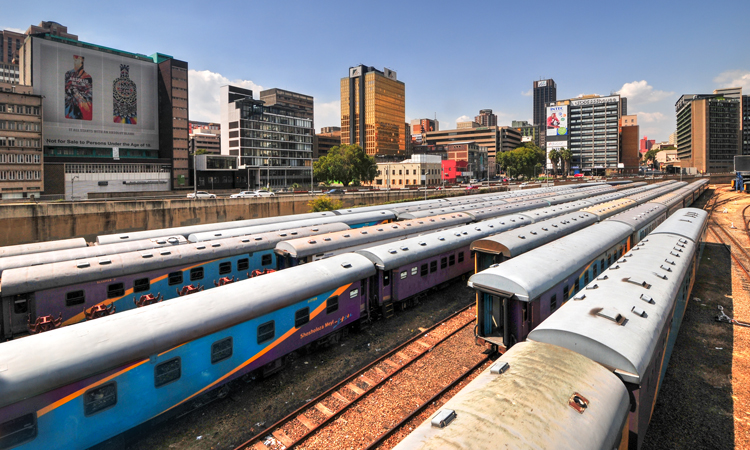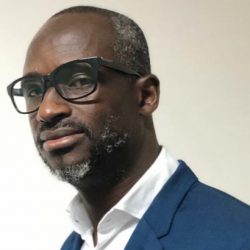Adapting first world systems to improve African mobility
- Like
- Digg
- Del
- Tumblr
- VKontakte
- Buffer
- Love This
- Odnoklassniki
- Meneame
- Blogger
- Amazon
- Yahoo Mail
- Gmail
- AOL
- Newsvine
- HackerNews
- Evernote
- MySpace
- Mail.ru
- Viadeo
- Line
- Comments
- Yummly
- SMS
- Viber
- Telegram
- Subscribe
- Skype
- Facebook Messenger
- Kakao
- LiveJournal
- Yammer
- Edgar
- Fintel
- Mix
- Instapaper
- Copy Link
Posted: 27 February 2020 | Nosipho Pambuka - ICT-Works, Yssoufou Cisse - African Association of Public Transport (UATP) | No comments yet
Yssoufou Cisse, Head of UITP Africa Regional Office & Secretary General UATP and Nosipho Pambuka, Managing Executive of the ICT-Works Transport Solutions Business Unit, share their experience of implementing First World systems into the complex and unique infrastructure of the African continent.


Today more than four billion people live in urban areas globally. By 2050, it is predicted this figure will rise to seven billion. The growth of cities is here to stay, and as sure as the sun will rise tomorrow, the travel of millions of people to and from work every day is a reality of the modern world. 40 per cent of the African continent’s 1.2 billion people live in urban cities and it is predicted that by 2030, 50 per cent of these people will be city dwellers.
The dwelling structures of African cities were designed in such a way that our people commute for hours on end, travelling long distances to the hub of opportunity. This results in between three and four hours stolen daily from their lives, leaving citizens depleted of energy and unable to perform at their best. Countries across the African continent are now designing holistic approaches to improving modern day traffic and ultimately reduce the time spent by commuters travelling to and from work. With the resources that technology provides, this process is being simplified for quicker results.
Several countries in the continent have adopted the use of bus rapid transport as a method to improve mobility to and in the city, looking to first world countries for tried and tested systems to implement
Several countries in the continent have adopted the use of bus rapid transport as a method to improve mobility to and in the city, looking to first world countries for tried and tested systems to implement. Various global funding institutions have explored supporting such initiatives with the aim of achieving the desired economic growth. Comprehensive research has been conducted on the various solutions, however certain criteria in developing these models has not been considered; population density in the city is one of them, cost of ownership for municipalities operating these systems is another, not forgetting the affordability of citizens who would use some of these very sophisticated methods of mobility.
This omission has come with various challenges as the terrains are vastly different and the fourth industrial revolution does not accommodate any slackness in approach. As an implementor of various ‘off the shelf’ integrated transit solutions procured from first world countries, I would like to share some of the challenges experienced.
Cost
First world systems are prohibitively costly for the African market, from the physical bus used for travel, to the systems required to plan daily operations effectively. Cities across the continent are facing serious difficulty with upfront capital cost; procurement of buses, construction of dedicated lanes, and implementation costs of hardware and software development, amongst others. In essence, first world systems are unaffordable for the African market. Even if funding is sourced from international funding institutions, such funding is exhaustive and long-term cost of ownership becomes a challenge.
Network and infrastructure
Aside from cost, one of the biggest challenges with first world transport solutions is that they make upfront assumptions about infrastructure, that is connectivity, for the operator and the commuter. Moreover, having reliable electricity in place is an obvious first world commodity, however Africa has massive infrastructure challenges both from a connectivity and a reliable electricity perspective, making the running of these systems very cumbersome.
First world ITS solutions require 100 per cent uptime in order to be able to operate 100 per cent effectively. This is not an issue in places like Europe and the U.S., but is not feasible on the African continent where network connectivity is patchy at the best of times and there are very often electricity outages or load shedding.
Solution features are a mismatch to local requirements
Most of the first world ITS solutions procured run on software that was developed many years ago, with large amounts of features that have been added on to address user requirements over several years.
This often makes the system bulky and adds to the cost with features that will never be used, and because the system has been standardised for first world users, developers of said system lack local market customisation. An IT system is generally an enabler and the software is built around solving particular problems. The problem may be similar for both the first world and the African Continent, but the solution needs to be configured differently.
In Africa, law enforcement with respect to transport has yet to become as strict and strongly enforced, adding a further infrastructure cost to public transport.
A case in point is that ticketing solutions are built mostly to resolve the issue of using cash and, in the case of the first world, promote the use of debit or credit cards to transact. In Africa, a high number of commuters would not necessarily be banked and as such would not carry debit or credit cards. They would, however, be far more likely to carry smartphones. To that end, we need to be looking forward to applications that are primarily designed to use this device as a method of payment. First world solutions are primarily focused on cards as a mechanism to load cash onto, while in Africa it is fair to say that ‘cash is king’.
Another case in point is that law enforcement is extremely strict and strongly enforced in the first world, thus ensuring little or no fare evasion with users always tapping in and out on a validator without any supervision. Transport systems in the first world are also highly subsidised, thus providing no motivation to evade the fare. In Africa, law enforcement with respect to transport has yet to become as strict and strongly enforced, adding a further infrastructure cost to public transport. As such, commuters still need to be monitored, either using rules on the software where users are charged a maximum fare on their next ride if they fail to tap, or using change agents, at yet another cost, to enforce procedures. In some cases, turnstiles have even been installed, all in an effort to avoid fare evasion – challenges first world ITS solutions don’t consider when implementing in Africa.
All of the above add further cost to an already unaffordable system, as well as additional features to the solution.


Skills and training
Most of the ITS systems are procured on a tender basis where suppliers are competing for the lowest price. Training is often included in the purchase price, but it tends to make certain assumptions. It is often assumed that the skills are available to the same standard. The training programmes are either too brief or too comprehensive and overwhelming. These training programmes are often given at the start of the project when users are still getting to grips with the system. Our experience suggests that longer training periods over an extended period are far more effective, particularly ‘on-the-job’ training, as this allows users to operate while being trained. Training is crucial to the success of an implementation and cannot be underestimated, and we therefore need to make sure it is carried out to the standards we expect.
Sometimes the systems come pre-configured, thus depriving users of the opportunity to learn and understand how the system is configured. This is because the system delivered to the continent is already a copy of an existing project. The users do not get to choose which parameters work for their environment. A fundamental challenge exists with the perception that first world ITS solution providers have of the African continent – the belief that there are either no, or very few, skills locally, and as such the perception that they must do all the configuration work themselves, leaving no room for local empowerment or growth. This does not bode well for development of local skills.
Hopefully the development and wide use of APIs (application programme interfaces) will address most of the integration challenges. It could be said that the lack of understanding of the local environment by first world ITS solution providers results in white elephants that are costly and become a political football to settle political scores.
Support
It is important that issues of support are spelled out clearly in the contract to ensure faster turnaround times. These are often not considered by first world solution providers as these local issues may never have been experience by them and are easily ascribed to personnel or to the environment. This is as a result of first world suppliers not having taken the time to understand the local environment or local requirements, therefore when their solution doesn’t ‘fit’ they don’t understand why.
Africa’s transport inefficiencies are financially crippling, but the need to resolve its problems could not be more socially important.
Long-term support is critical to the overall success of a solution and experience has shown that if the first world ITS solution provider doesn’t come to terms with understanding local requirements and local issues then the solution will never be a long-term success.
Logistics
Bidding requires that all costs are factored in upfront and the winners usually need to undercut other suppliers. In Africa, it is often impossible to know all your costs upfront, especially logistics costs. Shipping and customs are an unknown quantity especially if you are not represented in the host country. The associated negotiations may be overnight or over a few months as middlemen often surface in between. This is something that a first world ITS supplier doesn’t necessarily understand.
Likewise is the challenge of finding spares or improvisation apparels, which is next to impossible in countries where there are no hardware stores. Without the right contacts, you could end up driving from market to market, rummaging through buckets of partly rusted screws and bolts and being charged double or triple the cost. It is always advisable to tag a local and to carry a picture of what you are looking for as it may be called a different name.
The logistics of working in Africa opens a whole new world for first world ITS suppliers; it is an environment that one needs to be acutely aware of and one that requires trusted local partners.
Documentation
Service providers must ensure that first world ITS suppliers provide first world documentation because very often system documentation is not adequate. This in turn ensures perpetual reliance on the software developer and equipment manufacturer for an indefinite period. This may be a result of poor translation, or lack of documentation control and management as other users are no longer reliant on it. Either way, it is incumbent on us to ensure that we receive the necessary documentation if we are going to invest so heavily in these systems.
As a continent growing into ITS solutions it is critical that we do not fall short when it comes to knowledge transfer and as such we must ensure we have access to all the information at hand, including all documentation we are entitled to from first world ITS solution providers.
The way forward
In summary, it is clear from the above that first world solutions are not ideal for the African continent. Not only are they prohibitively costly from all angles, they assume first world infrastructure, their features are a mismatch to local requirements, and first world suppliers do not understand local challenges particularly when it comes to training, support, logistics and documentation. We need cost-effective solutions that put Africa first – solutions that are functional, reliable, and easy to support and maintain. To overcome the above challenges we need to work side by side with first world ITS solution providers to learn as much as we can, and take those lessons learnt to empower ourselves to move forward as quickly as possible.
Transport is the facilitator and will remain the facilitator of the modern-day economy. The time spent daily in traffic diminishes the chances of realising this ideal. It is up to us to facilitate ongoing improvement in public transport on the African continent, thus ensuring facilitation of the African economy.
Africa’s transport inefficiencies are financially crippling, but the need to resolve its problems could not be more socially important. Creative solutions are required to navigate the treacherous African landscape of the transport sector, as developing and implementing effective mobility solutions in this environment will not be easy. I believe a fresh-look, clean-slate approach driven by the continent itself will provide the answers, and with the reward being so great, the time for action is now.
Biographies


He is a Civil Engineer and Transport Economist LET in Lyon France, and has 15 years professional experience in transport and organisation management.


Pambuka holds a B.Pharm degree from the University of the Western Cape, Cape Town and is currently studying towards an MSc in Innovation and Technology through the Da Vinci Institute of Technology.
Related topics
Fleet Management & Maintenance, Infrastructure & Urban Planning, Intelligent Transport Systems (ITS), Passenger Accessibility, Public Transport, Ticketing & Payments, Transport Governance & Policy
Issue
Issue 1 2020
Related cities
Africa
Related organisations
African Association of Public Transport (UATP), ICT-Works








